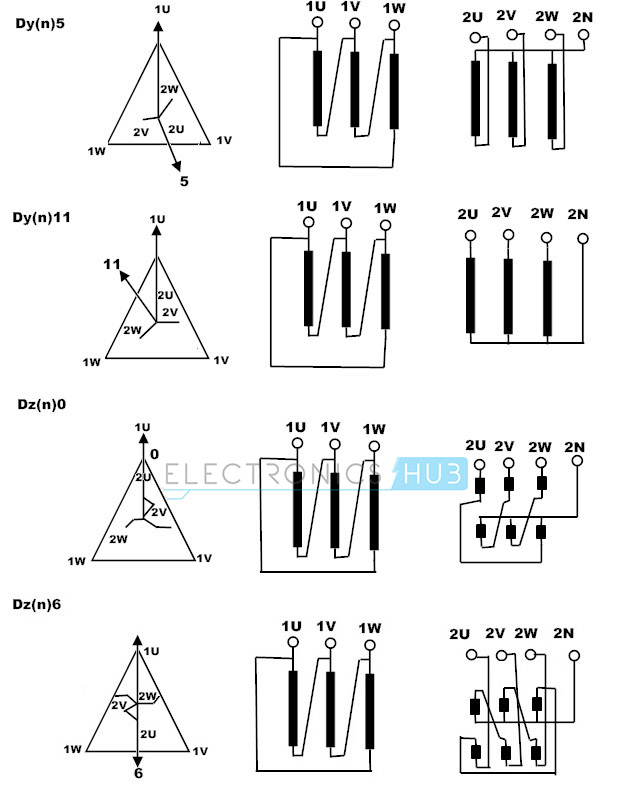3 Phase Autotransformer Connections
- 3 Phase Transformer Wiring Connections
- Three Phase Auto Transformer Connections
- 3 Phase Transformer Connection Diagram
Three-phase Transformers. A transformer bank composed of three single-phase units may be replaced by one 3-phase transformer – the magnetic core has three flux-carrying legs. two yokes, bottom and top, couple the flux of the three legs. the sum of the three fluxes equals zero – each leg contains the primary and secondary windings. Three similar single-phase transformers can be connected to form a three-phase transformer. The primary and secondary windings may be connected in star (Y) or delta (D) arrangement. Three Single Phase transformer Bank For example, the figure below shows a Y-D connection of a three-phase transformer. Delta-Delta Connection. Example – three single-phase transformers are connected in delta-delta configuration to step down a line voltage of 138 kV to 4160 V to supply power to a manufacturing.
Three-phase autotransformer connection

1. Design, Vector group
A three-phase transformer consists of the interconnection of three single-phase transformers in Y– or D – connection. This transformer connects two three-phase systems of different voltages (according to the voltage ratio). This arrangement is mainly used in the USA – in Europe only for high power applications (>200 MVA) because of transportation problems. The combination in one single three-phase unit instead ofthree single-phase units is usual elsewhere. The technical implementation is very simple. Three single-phase transformers, connected to three phase systems on primary and secondary side, are to be spatially arranged. A complete cycle of the measuring loop around the three iron cores results in = 0 i u and:
3 Phase Transformer Wiring Connections
2. Three-Leg Transformer
Three Phase Auto Transformer Connections
The magnetic return paths of the three cores can be dropped, which results in the usual type of three-phase transformers.
One primary and one secondary winding of a phase is arranged on any leg Five-leg transformers are used for high power applications (low overall height).
Primary and secondary winding can be connected in Y–D – connection, according to Requirements. The additional opportunity of a so called zigzag connection can be used on the secondary side. The separation of the windings into two parts and their application on two different cores characterize this type of connection. This wiring is particularly suitable for single-phase loads. Significant disadvantage is the additional copper expense on thesecondary side increased about a factor 2/3compared to Y– or D – connection. A conversion from line-to-line quantities to phase quantities and the usage of single-phase ecdand phasor diagram is reasonable for the calculation of the operational behavior of balanced loaded three-phase transformers.
The method of symmetrical components (see 2.6) is suited for calculations in case of unbalanced load conditions. In a parallel connection of two three-phase transformers the transformation ratio as well as the phase angle multiplier of the according vector group needs to be adapted.
Examples for vector groups (based on VDE regulations):
Figure2.17 Table showing phasor diagrams and ecd according to vector group and multiplier
With:
·upper case letter à vector group on primary side
·lower case letter à vector group on secondary side
·Y, y à star connection
·D, d à delta connection (?)
·z à zigzag connection
The multiplier gives the number of multiples of 30°, defining the total phase shift, of which the low voltage (secondary side) lags behind the higher voltage (same orientation of reference arrow assumed).

Mnemonic: clock

3 Phase Transformer Connection Diagram
higher voltage: 12 o’clock
lower voltage: number of multiplier (on the clock)
